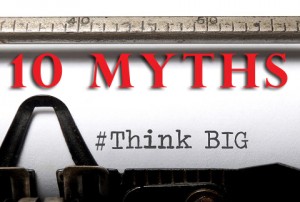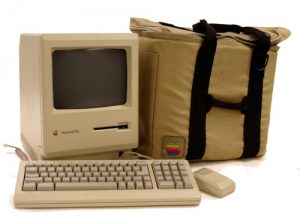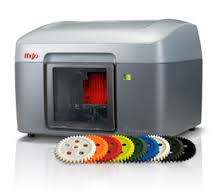 The great and wise Solomon once said, “There’s nothing new under the sun,” and he meant nothing, not even new ideas.
The great and wise Solomon once said, “There’s nothing new under the sun,” and he meant nothing, not even new ideas.
“What do you mean?” you might say. “That can’t be right. I see new ideas around me all the time. On top of that, I’ve got to make my own new ideas if I want to be a success. You mean my ideas aren’t new? What am I going to do now?”
You Can Become a Copycat Success
I know, I know, your mom, your dad, your teachers, all told you as a child, not to copy someone else’s work. They told you it was bad to copy, right? And you believed them? I know I did. In fact for years, as a young artist, I struggled to come up with new art ideas.
Then one day I learned it’s OK to be a copycat. That’s right. I discovered that even the best artists use copied images, photos, and many other bits and pieces from other people. They then modify, adjust, and massage these elements into their own product.
Need another example? The self-improvement industry is a good one. Do you think that all the contemporary self-improvement gurus are coming up with all new ideas, methods, systems? I used to think that.
Then I started reading authors from the early 20th century. Authors like Napoleon Hill, one of the founding fathers of success philosophy, Dale Carnegie, Og Mandino, and more.
Today, when you read most any modern self-improvement author, trainer, or speaker, you’ll likely recognize seeds of Hill’s writings in their own work. What teachers like Tony Robbins and Jack Canfield do is gather wisdom from the ages and from around the world, organize it into books, package it, and present the ideas to a contemporary audience.
What does this mean to you and me? It means there’s nothing new. It means we don’t have to stress and strain to come up with that are 100% new.
Creating Something Meaningful By Copying
You don’t have to make something new, to make something meaningful and valuable. You can take an old idea, dress it up with your own experience, knowledge, wisdom, and share it with the world, and they’ll buy it. Why? Because an idea that seems new today is simply new to the people in this generation, people who are encountering things that they haven’t previously encountered. Each generation has new people looking for help solving their problems.
So how do you become a good copycat? How do you overcome that childhood law not to copy? To copy or not to copy, that is the question.
OK. Before we go on any further, let me say, I support copyright laws.
I am a staunch supporter of copyright, patent, and trademark laws. I don’t like, nor condone piracy for any reason, unless it’s Johnny Depp, in The Pirates of the Caribbean.
In fact, I was glad to see the Google Books attempt to copy books without permission to remain unsuccessful. I know how much work goes into the creation of a book.
I believe if you work hard to create something, you have a right to protect it or give it away for free, it’s completely your choice. I’m not suggesting taking someone’s book, changing the author’s name, and saying you wrote the book. I’m not saying copy someone’s programming code, repackage it, and sell it as your own. I believe that’s a crime, and always should be, unless you (Google Books) have paid for the license or right to do so.
8 Secrets to Becoming a Successful Copycat
- Keep track of what inspires you. A good copycat will always have a scrapbook full of images, sketches, stories, and other ideas.
- Let the good in and good will come out. Look at the masters in your area of interest. Their execution of ideas will inspire your own ideas. Your own ideas may come out as a combination of multiple ideas, which in their bits and pieces, were created by others.
- Avoid recreating the wheel. If you like the packaging design of a product, why struggle to create your own? If you like the cover of a book, its colors, font style, image placement, why struggle to create something without inspiration.
- Follow the experts. This is similar to number two. But, back to books. If you need to design a book cover for your latest novel or non-fiction, and you can’t afford to hire a designer, check out the bestseller list. It’s likely books on that list were designed by professional designers. You’ll find plenty of ideas for your own book cover.
- When possible, hire an expert. I’m in the process of publishing the fourth book in a series for an author. The previous publisher used the same artist on the first three books. Now, I’d like to save some money and not have to hire an artist, however, saving the money is not worth breaking the integrity of the series. Sometimes an expert is worth the price.
- Copy ideas, not words. The wonderful thing about the current copyright laws is that they don’t protect ideas. For example; you can’t copy the idea of a book about Google Glass. You can only copyright the compilation of the author’s words. You can’t copyright or protect the idea of writing a book, then creating an audio version, then turning it into a speech, and so on. If you need ideas that can help you grow your business, look at what other businesses are successfully doing to grow. Then, copy like crazy.
- Be respectful and follow the current laws. As a copycat, always follow the golden rule, “Do unto others as you would have them do unto you.” Be respectful, give credit where credit is due, and always follow the law.
- Form a partnership. Do you see a product you’d like to have in your business? Contact the creator of that product and pursue a partnership. Forming a win-win partnership may save you a lot of time, money, and frustration trying to duplicate their system, process, or idea.
Look around. Everywhere you look, you’ll see copycaters big and small. FedEx just copied the US Postal Service and is now offering their own Flat Rate Shipping. Not a new idea.
Blockbuster tried to copy Netflix and get into the DVD by mail, but, too late to the game, they failed. It wasn’t a new idea for them. Redbox is copied by Imozi in offering movies from vending machines. There are currently multiple players in the vending space. Not a new idea.
Water from a machine. Not a new idea. Discount shopping warehouses. Not a new idea. These ideas have multiple players in the space. Each player is putting their own little spin on the idea. Each one is looking at the other saying, “How can we copy them? How can we do it better? How can we capture market share?”
In fact, according to the CNBC special program, The Costco Craze, Inside the Warehouse Giant, Costco has employees that go into competitor’s stores to track and send real-time pricing and product information back to the home office. They call it market research. I call it copycatting.
Don’t wait for a new idea to spring to mind. Go out and look for an idea to copy. Write a different book on the same topic with a unique spin. Make your own hamburger with a unique sauce. Make ribs without the bone.
Good Copycats Make Better Ribs
On a recent Shark Tank, “Bubbas Q Boneless Baby Back Ribs” entrepreneur, Al “Bubba” Davis presented his boneless rib idea.
http://youtu.be/xkNqrh01HJ8
Bar-B-Que ribs are not a new idea. Many people restaurants make and serve great Bar-B-Que ribs. Other restaurants in Bubba’s area serve ribs. But, one day Bubba said to himself, “What if we do something different with our ribs?” So he did. He took the bones out of the ribs and had a hit. Just a little twist to an old idea and you have a “Why didn’t I think of that moment?”
When you’re a good copycat, your big idea may come from simply adding a twist to the product or service that is already available.
Disclaimer:
This article is presented solely for educational and entertainment purposes. The author and publisher are not offering it as legal, accounting, or other professional services advice. While best efforts have been used in preparing this article, the author and publisher make no representations or warranties of any kind and assume no liabilities of any kind with respect to the accuracy or completeness of the contents and specifically disclaim any implied warranties of merchantability or fitness of use for a particular purpose. Neither the author nor the publisher shall be held liable or responsible to any person or entity with respect to any loss or incidental or consequential damages caused, or alleged to have been caused, directly or indirectly, by the information or programs contained herein. You should seek the services of a competent professional before beginning any copycat program.
 Are you ready to get it? Ready to go get your dream? Ready to rip it down from the sky, to make it your own?
Are you ready to get it? Ready to go get your dream? Ready to rip it down from the sky, to make it your own? What is it that allows some people to seem to have a steady flow of Big Ideas while others seem to live in a desert devoid of creativity? It is the way men and women think. There are those that think they can, and those that think they can not. Both end up being right in the outcome. Do you want to break the chains that may be keeping you from Big Ideas? Then begin by casting off these 10 Myths About Big Ideas.
What is it that allows some people to seem to have a steady flow of Big Ideas while others seem to live in a desert devoid of creativity? It is the way men and women think. There are those that think they can, and those that think they can not. Both end up being right in the outcome. Do you want to break the chains that may be keeping you from Big Ideas? Then begin by casting off these 10 Myths About Big Ideas.
 Unfortunately, This is a myth by which many creative people and businesses live. It’s in the same family as “If it ain’t broke, don’t fix it.” This myth has actually been the death of many a once-thriving business.
Unfortunately, This is a myth by which many creative people and businesses live. It’s in the same family as “If it ain’t broke, don’t fix it.” This myth has actually been the death of many a once-thriving business.
 Think your book cover design isn’t important? Think again. Book covers sell books. Whether you are a self-published author, or a traditionally published author, your book’s cover is the first thing your prospective readers will see. Here’s how to make your own book cover design whether you are using it to share with family and friend, sell it on Amazon and in bookstores, or offer it as an e-book.
Think your book cover design isn’t important? Think again. Book covers sell books. Whether you are a self-published author, or a traditionally published author, your book’s cover is the first thing your prospective readers will see. Here’s how to make your own book cover design whether you are using it to share with family and friend, sell it on Amazon and in bookstores, or offer it as an e-book.
 Many designers and publishers offer
Many designers and publishers offer  A few years ago I noticed several 3D Printer projects on the crowd funding site
A few years ago I noticed several 3D Printer projects on the crowd funding site 